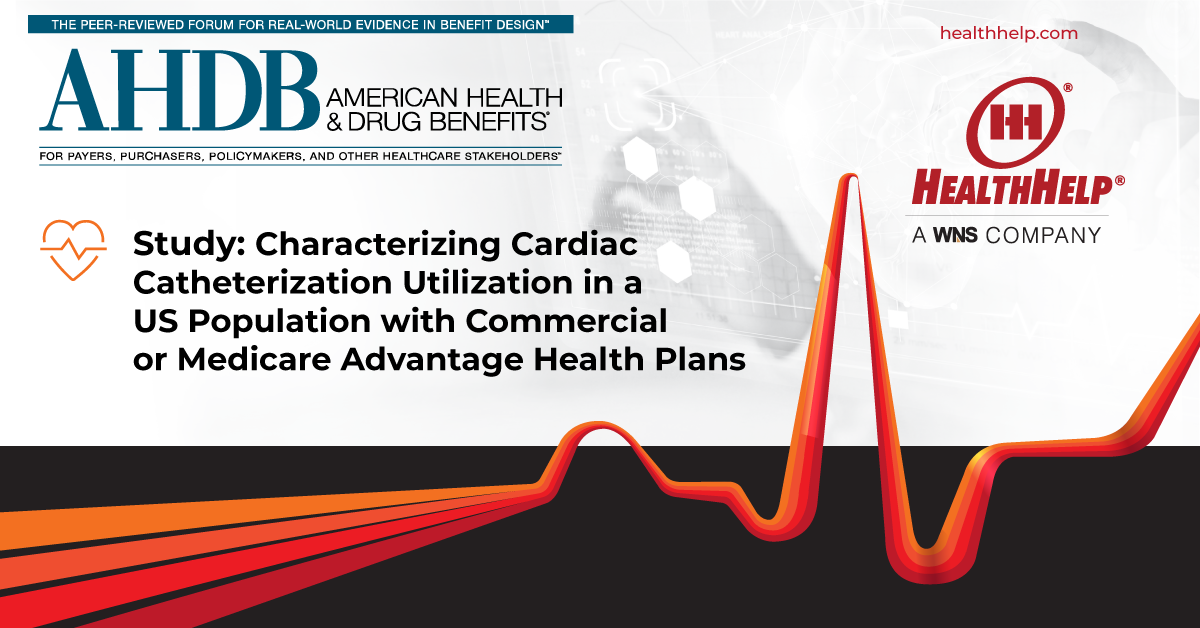A peer-reviewed article, “Characterizing Cardiac Catheterization Utilization in a United States Population with Commercial and Medicare Advantage Health Plans”, has been published by American Health & Drug Benefits. A poster based upon this research was previously presented at the 2020 Health Equity Conference, which was hosted by the National Rural Health Association. The study was a byproduct of the ongoing outcomes research collaboration between HealthHelp and Humana.
Health plans and health systems need to understand demand for common services, such as cardiac catheterization, in order to ensure adequate access. The purpose of the study was to illustrate how utilization of cardiac catheterization has changed over time, and how it differs between subpopulations. Through exploring this topic, the study increases general knowledge on the association between patient characteristics and demand for cardiac catheterization in a privately insured population.
Cardiac catheterization claims data covering care delivered from 2012 to 2018 were extracted from the database of a national healthcare organization offering commercial and Medicare Advantage health plans. Contemporaneous health plan enrollment data and government data were used to determine patient characteristics. Annual catheterizations per 1,000 patients for the population as a whole and for subpopulations was determined using claims data. Spearman’s Rank Correlation was used to assess the monotonicity of trends. Utilization for each subpopulation was compared to the population average. A second, patient-level analysis was conducted to determine factors predictive of patients’ utilization of catheterization in 2018.
Across the overall population, the rate of cardiac catheterization was stable from 2012 to 2018. Adjusted analysis of 2018 data showed that utilization of catheterization was significantly and positively associated with older age, male sex, rural urbanicity, lower income, and residence in a high obesity state. Trendlines of the relative utilization of subpopulations over time revealed similar patterns.
The study concluded that there were marked differences in rates of cardiac catheterization utilization between subpopulations. Health plans and systems should explore the implications of disproportionate demand for cardiac catheterization in lower income, higher obesity, older, and rural areas when working to ensure adequate access to care. In response to the study’s findings, the study’s lead author, Adam C. Powell, Ph.D., remarked, “Taking a population health approach requires understanding differences in how subpopulations utilize services and how service utilization has changed over time. As cardiac catheterization is a common procedure, we felt that it would be beneficial to gain a better understanding of how it is being used. While utilization was stable during the period, there were large differences in the extent to which different subpopulations utilized cardiac catheterization.”
To read the article, visit: Characterizing Cardiac Catheterization Utilization in a US Population with Commercial or Medicare Advantage Health Plans
